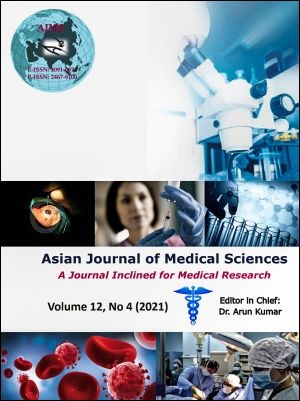Hemihyperplasia with Multiple intestinal Lipomatosis presenting with intestinal obstruction due to intussusception, challenges in treatment- A Rare case
Keywords:
Hemihyperplasia, Multiple Intestinal Lipomatosis, Intussusception, Intestinal ObstructionAbstract
Hemihyperplasia is a syndrome with overgrowth of limbs and associated with various genomic syndromes. Rarely patient presents with intestinal obstruction when it is associated with sub mucosal lipomas. Submucosal lipomas are common in colon. But whole of small and large bowel studded with them is very rare as in our case. It presents dilemma not only in diagnosis but in treatment also. Here we present a case of forty two years females with hemihyperplasia syndrome came to causality with recurrent intestinal obstruction. On CECT Abdomen diagnosis of intestinal obstruction due to intussusception was made. Whole of bowel is studded with submucosal lipomas. Patient was tried to manage conservatively but patient does not respond and Right Hemicolectomy was done of intussusception segment. Anastomosis leaked and on re-exploration end ileostomy was done. Obstruction due to Multiple Intestinal Lipomatosis (as a part of Genetic Syndrome) should be managed conservatively and if operative intervention is required avoid primary anastomosis.
Downloads
Downloads
Published
How to Cite
Issue
Section
License
Authors who publish with this journal agree to the following terms:
- The journal holds copyright and publishes the work under a Creative Commons CC-BY-NC license that permits use, distribution and reprduction in any medium, provided the original work is properly cited and is not used for commercial purposes. The journal should be recognised as the original publisher of this work.
- Authors are able to enter into separate, additional contractual arrangements for the non-exclusive distribution of the journal's published version of the work (e.g., post it to an institutional repository or publish it in a book), with an acknowledgement of its initial publication in this journal.
- Authors are permitted and encouraged to post their work online (e.g., in institutional repositories or on their website) prior to and during the submission process, as it can lead to productive exchanges, as well as earlier and greater citation of published work (See The Effect of Open Access).




